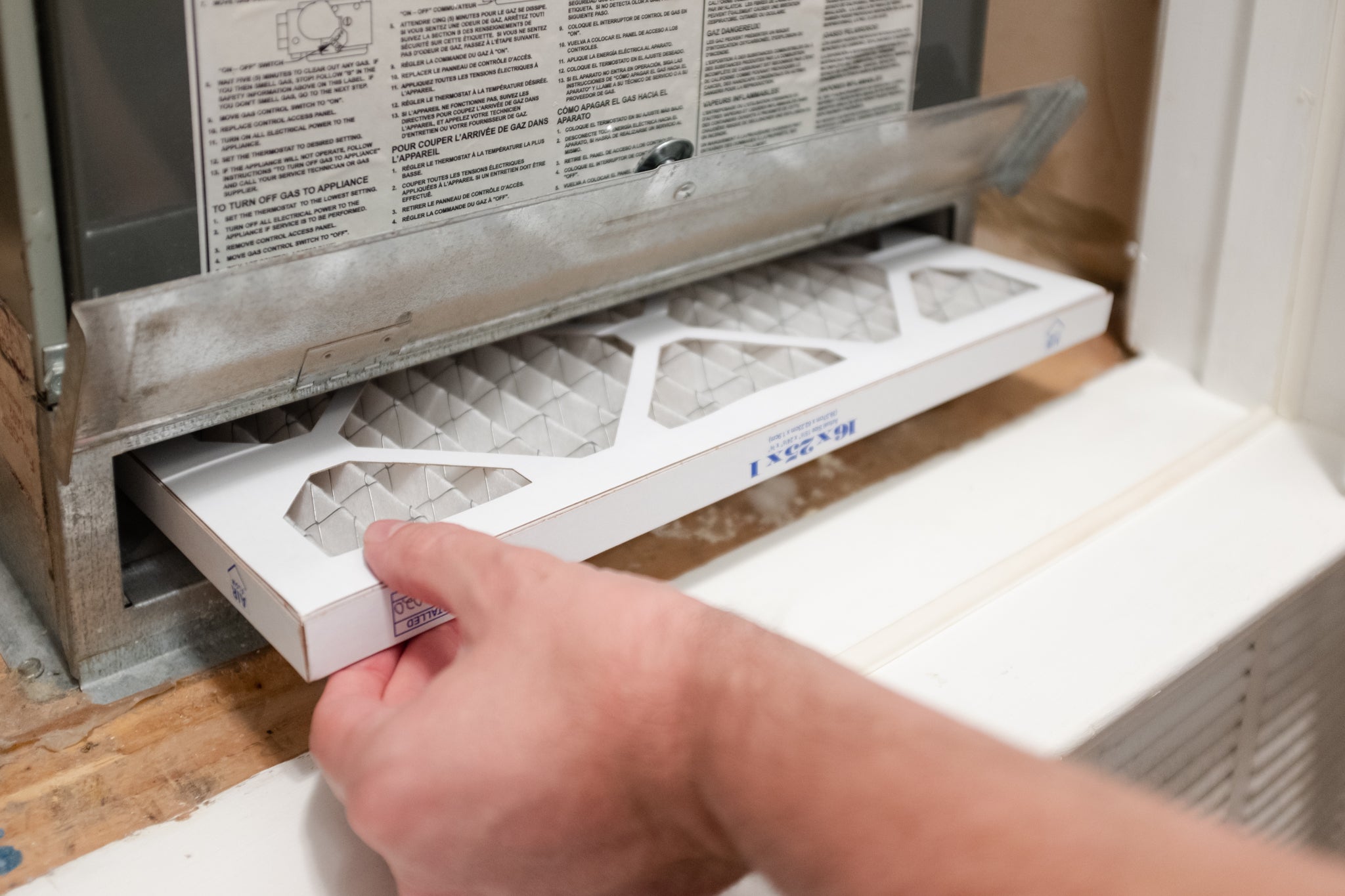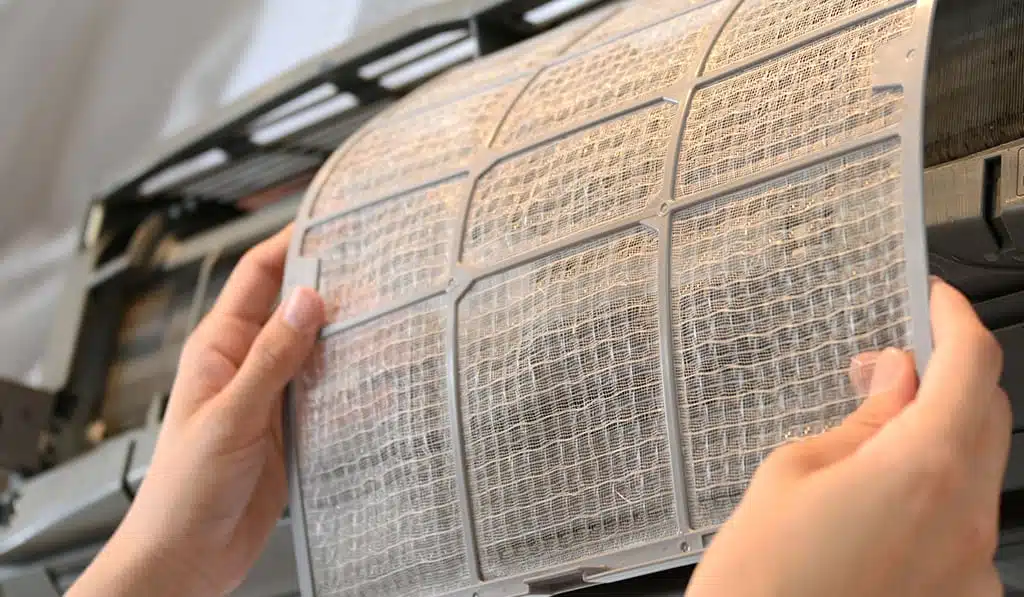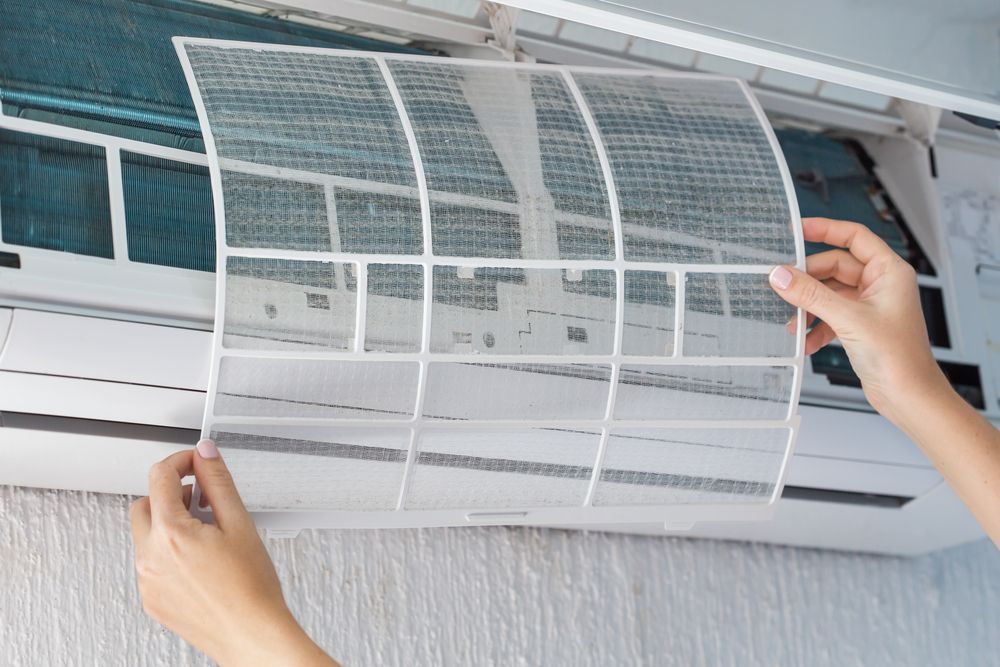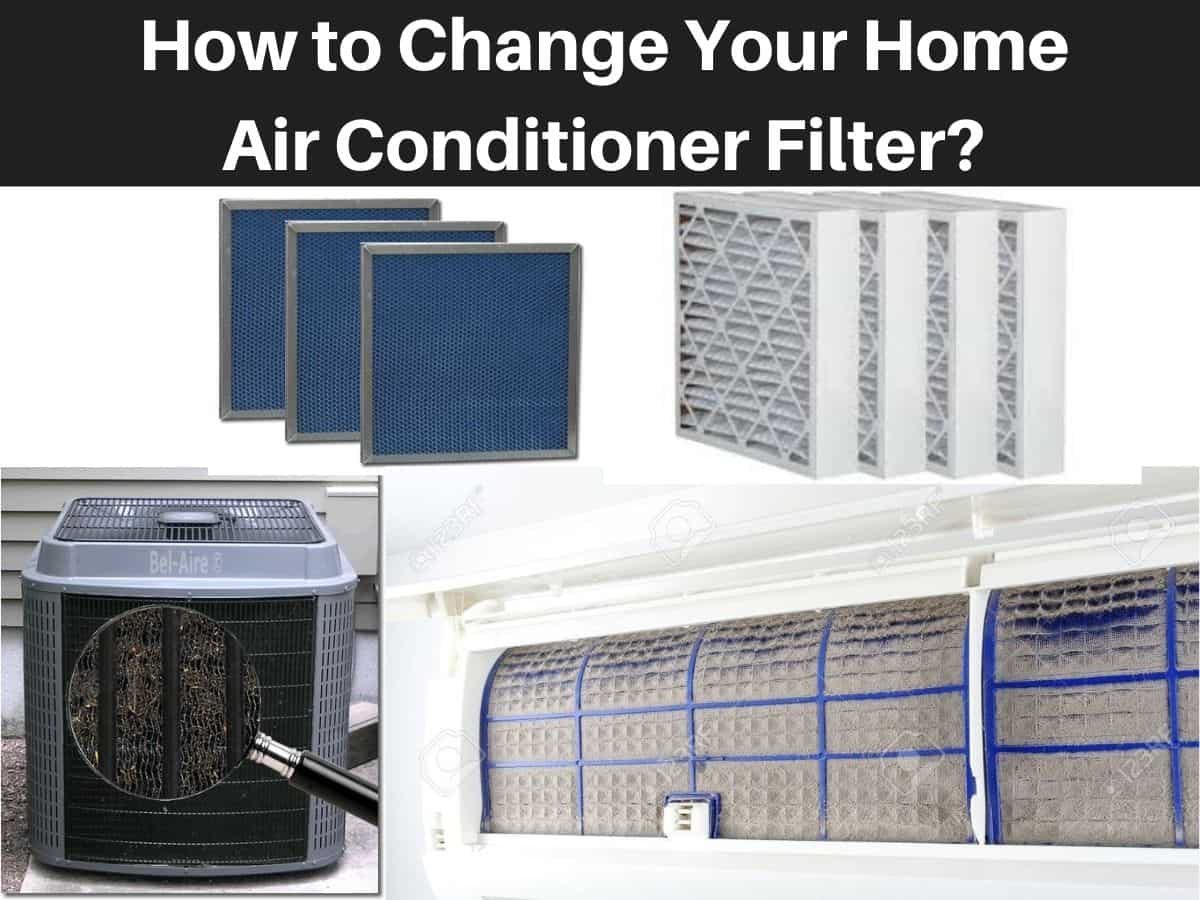How To Put Air Filter In Air Conditioner

Maintaining your air conditioner is crucial for optimal performance, energy efficiency, and air quality. One of the most important, and easiest, maintenance tasks is regularly replacing your air filter. A dirty filter restricts airflow, forcing your AC unit to work harder, leading to higher energy bills and potentially causing damage. This guide will walk you through the process of changing your air filter, ensuring a cooler and healthier home.
Why is Changing Your Air Filter Important?
Air filters play a vital role in the overall health and efficiency of your air conditioning system. Here's a breakdown of why changing them regularly is so important:
Improved Air Quality
The primary function of an air filter is to trap dust, pollen, pet dander, mold spores, and other airborne particles. By capturing these contaminants, the filter prevents them from circulating throughout your home, leading to improved indoor air quality. This is especially important for individuals with allergies, asthma, or other respiratory conditions.
Increased Energy Efficiency
A clogged air filter restricts airflow. When airflow is restricted, your air conditioner has to work harder to cool your home. This increased workload translates to higher energy consumption and, consequently, higher energy bills. Replacing a dirty filter with a clean one allows for proper airflow, reducing the strain on your system and improving its energy efficiency. Think of it like trying to breathe through a straw versus breathing freely.
Extended Lifespan of Your AC Unit
When your air conditioner is forced to work harder due to a clogged filter, it puts stress on its components, such as the compressor and fan motor. This added stress can lead to premature wear and tear, potentially shortening the lifespan of your unit. Regular filter changes help prevent this by ensuring proper airflow and reducing the strain on your system. A clean filter helps the entire system run smoothly and efficiently.
Preventing Costly Repairs
Neglecting to change your air filter can lead to more significant problems down the road. A restricted airflow can cause the evaporator coil (the part of your AC that cools the air) to freeze up. A frozen coil can damage other components and require costly repairs. Regular filter changes are a simple and inexpensive way to prevent these issues.
Gathering Your Supplies
Before you begin, gather the necessary supplies. This will make the process smoother and more efficient.
- New Air Filter: Make sure you have the correct size and type of air filter for your unit. We'll discuss how to determine this in the next section.
- Screwdriver (if needed): Some air filter compartments are secured with screws.
- Vacuum Cleaner (optional): To clean the area around the filter compartment.
- Gloves (optional): To protect your hands from dust and debris.
Choosing the Right Air Filter
Selecting the right air filter is crucial for optimal performance and air quality. Here's what you need to consider:
Size
The most important factor is the size of the filter. You can find the size printed on the frame of your old filter. It will be listed as length x width x depth, usually in inches (e.g., 16x25x1). If you don't have the old filter, consult your air conditioner's owner's manual or measure the filter compartment. Using the wrong size filter can prevent proper airflow or allow unfiltered air to bypass the filter.
MERV Rating
The MERV (Minimum Efficiency Reporting Value) rating indicates how effectively a filter captures particles. MERV ratings range from 1 to 20, with higher numbers indicating better filtration. For residential use, a MERV rating of 8 to 12 is generally recommended. This range provides a good balance between filtration and airflow. Lower MERV ratings (1-4) are less effective at capturing small particles, while higher MERV ratings (13-20) can restrict airflow and may not be necessary for most homes. Consider your specific needs, such as allergies or pets, when choosing a MERV rating. Consult with an HVAC professional if you are unsure which MERV rating is right for your system.
Types of Filters
Several types of air filters are available, each with its own advantages and disadvantages:
- Fiberglass Filters: These are the least expensive and offer minimal filtration. They are primarily designed to protect the AC unit from large debris, not to improve air quality.
- Pleated Filters: These filters have a folded design that increases their surface area, allowing them to capture more particles than fiberglass filters. They offer a good balance between filtration and airflow.
- Electrostatic Filters: These filters use an electrostatic charge to attract and trap particles. They are more effective at capturing small particles than fiberglass filters but can be more expensive.
- HEPA Filters: These filters are highly effective at capturing even the smallest particles, including bacteria and viruses. However, they can significantly restrict airflow and are typically only recommended for individuals with severe allergies or respiratory conditions.
Steps to Replace Your Air Filter
Now that you have your supplies and the correct filter, follow these steps to replace your air filter:
- Turn off your AC unit: This is crucial for safety. Locate the breaker switch for your AC unit in your electrical panel and switch it to the "off" position. This prevents the unit from turning on while you're working on it.
- Locate the filter compartment: The location of the filter compartment varies depending on the type of AC unit you have.
- For Central AC Units: The filter is usually located in the air handler, which is often in the attic, basement, or a closet. The filter compartment is typically a slot or door on the side of the air handler.
- For Window AC Units: The filter is usually located behind the front grill of the unit. You'll likely need to remove the grill to access the filter.
- For Ductless Mini-Split Systems: The filters are usually located behind the front panel of the indoor unit.
- Remove the old filter: Carefully remove the old air filter. Note the direction of the airflow arrow on the filter frame. This indicates which way the filter should be installed. If there is a lot of dust and debris, consider wearing gloves and having a trash bag handy.
- Clean the filter compartment (optional): Use a vacuum cleaner to remove any dust or debris from the filter compartment. This will help ensure that the new filter seals properly and prevents unfiltered air from bypassing it.
- Insert the new filter: Install the new air filter, making sure the airflow arrow is pointing in the correct direction. The arrow should point towards the blower motor. Incorrect installation can reduce the filter's effectiveness.
- Close the filter compartment: Secure the filter compartment door or cover. If you removed any screws, replace them. Ensure the compartment is properly sealed to prevent air leaks.
- Turn on your AC unit: Go back to your electrical panel and switch the breaker for your AC unit back to the "on" position. Then, turn on your AC unit and check that it is running properly.
How Often Should You Change Your Air Filter?
The frequency with which you should change your air filter depends on several factors, including:
- Type of Filter: Thicker, pleated filters generally last longer than thin, fiberglass filters.
- Number of Occupants: Homes with more occupants tend to generate more dust and debris, requiring more frequent filter changes.
- Pets: Pets shed dander and hair, which can quickly clog air filters.
- Allergies or Respiratory Conditions: Individuals with allergies or respiratory conditions may benefit from more frequent filter changes.
- Air Quality: If you live in an area with high levels of pollution or dust, you may need to change your filter more often.
As a general guideline:
- Fiberglass filters: Change monthly.
- Pleated filters: Change every 1-3 months.
- High-efficiency filters: Change every 3-6 months.
It's always a good idea to check your filter monthly, especially during periods of heavy use, such as the summer months. If the filter looks dirty, it's time to replace it, regardless of the recommended replacement schedule. You can also set a reminder on your phone or calendar to help you remember to check and change your filter regularly.
Troubleshooting Common Issues
Here are some common issues you might encounter when changing your air filter and how to address them:
- Difficulty Removing the Old Filter: If the old filter is stuck, try gently wiggling it back and forth to loosen it. If it's still stuck, you may need to use a screwdriver to carefully pry it out.
- Incorrect Filter Size: If the new filter doesn't fit properly, double-check the size. If you purchased the wrong size, return it and get the correct one.
- Difficulty Closing the Filter Compartment: Make sure the filter is properly seated in the compartment. If it's not, it may prevent the door or cover from closing properly.
- AC Unit Not Working After Filter Change: Double-check that you turned the breaker back on. Also, ensure that the filter compartment is properly sealed. If the problem persists, consult with an HVAC professional.
Professional Maintenance
While changing your air filter is a simple DIY task, it's important to remember that it's just one aspect of AC maintenance. Regular professional maintenance is essential for ensuring the long-term health and efficiency of your system. A qualified HVAC technician can inspect your unit, clean the coils, check the refrigerant levels, and identify any potential problems before they become major issues. Think of professional maintenance as a regular check-up for your AC system.
By following these tips, you can ensure that your air conditioner is running efficiently and providing you with clean, comfortable air. Regular filter changes are a simple yet effective way to save money, improve air quality, and extend the lifespan of your AC unit.










